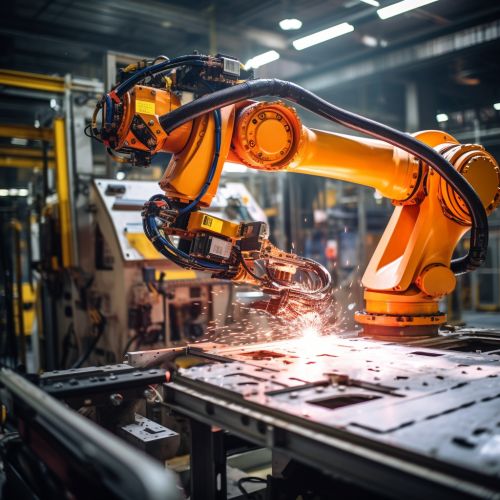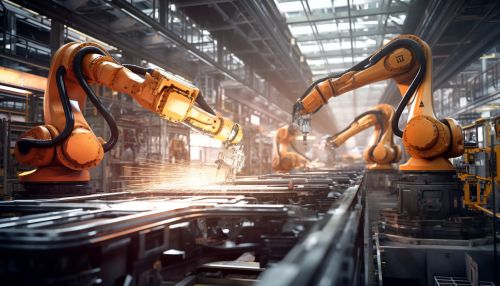Robotic Automation
Introduction
Robotic automation, also known as RPA, is a field of technology that involves the use of software robots or "bots" to automate routine tasks traditionally performed by humans. This technology is rapidly transforming industries such as manufacturing, healthcare, and finance by increasing efficiency, reducing errors, and freeing up human workers to focus on more complex tasks.
History and Evolution
The concept of robotic automation has its roots in the early days of computing. The first software bots were simple scripts designed to automate repetitive tasks. However, with the advent of artificial intelligence and machine learning, these bots have become increasingly sophisticated, capable of handling complex processes and making decisions based on predefined rules.
In the early 2000s, companies like Blue Prism and Automation Anywhere began developing dedicated RPA platforms, which allowed businesses to automate a wider range of tasks without the need for extensive programming knowledge. These platforms use a combination of screen scraping, workflow automation, and artificial intelligence to mimic human actions and automate tasks.
Types of Robotic Automation
There are three main types of robotic automation: unattended automation, attended automation, and hybrid automation.
Unattended automation involves the use of bots that can operate independently without human intervention. These bots are typically used for tasks that can be fully automated, such as data entry or report generation.
Attended automation, on the other hand, involves bots that work alongside human users, assisting them with tasks as needed. These bots are often used in customer service environments, where they can help agents respond to customer inquiries more quickly and accurately.
Hybrid automation combines elements of both unattended and attended automation. In a hybrid model, bots can operate independently for some tasks, but also interact with human users when necessary.
Applications of Robotic Automation
Robotic automation is used in a wide range of industries and applications. In manufacturing, for example, bots can automate assembly line processes, increasing production speed and reducing errors. In healthcare, bots can assist with tasks such as patient scheduling, billing, and record keeping. In finance, bots can automate processes such as invoice processing, fraud detection, and regulatory compliance.


In addition to these industry-specific applications, robotic automation can also be used for general business processes such as HR, IT, and customer service. For example, HR bots can automate tasks such as employee onboarding and benefits administration, while IT bots can automate tasks such as password resets and software updates.
Benefits and Challenges
Robotic automation offers numerous benefits, including increased efficiency, reduced errors, and cost savings. By automating routine tasks, businesses can free up their human workers to focus on more complex and strategic tasks. Furthermore, because bots can work 24/7 without breaks, they can significantly increase productivity.
However, robotic automation also presents several challenges. One of the main challenges is the need for significant upfront investment in RPA technology and training. Additionally, businesses must carefully manage the transition to robotic automation to avoid disruption and ensure that human workers are not left feeling threatened or displaced.
Another challenge is the need for ongoing maintenance and updates. As business processes change and evolve, bots must be updated to keep pace. This requires ongoing investment in RPA technology and expertise.
Future of Robotic Automation
The future of robotic automation looks promising, with advancements in artificial intelligence and machine learning expected to drive further growth in the field. As bots become more intelligent and capable, they will be able to handle increasingly complex tasks, further increasing efficiency and productivity.
However, as robotic automation becomes more prevalent, it will also raise new ethical and societal questions. For example, what happens to the jobs that are displaced by automation? How can businesses ensure that the benefits of automation are distributed fairly? These are questions that society will need to grapple with as robotic automation continues to evolve.
